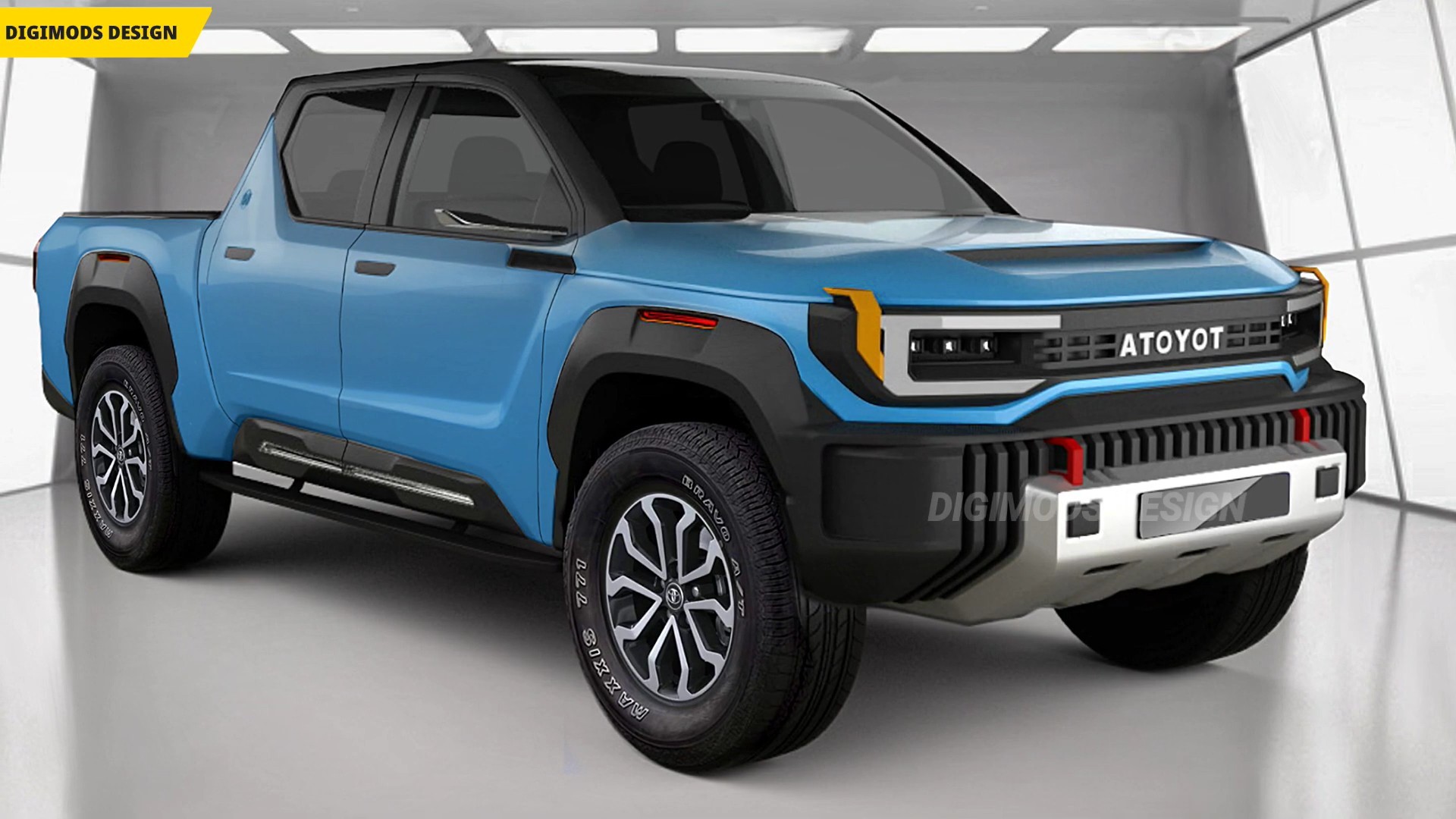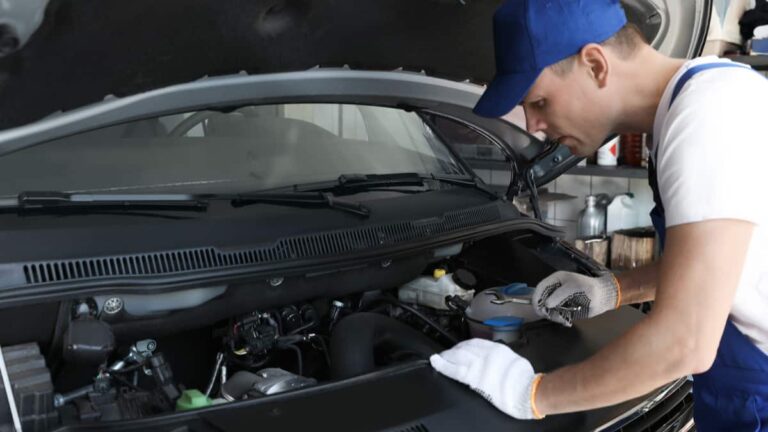What Are Gills On A Pick Up Truck? Unveiling the Mystery of Truck Vents
What Are Gills On A Pick Up Truck? Unveiling the Mystery of Truck Vents cars.truckstrend.com
When you hear "gills on a pickup truck," your mind might conjure images of a fish out of water, struggling to breathe on four wheels. In the world of automotive design, however, the term "gills" is a fascinating, if informal, descriptor for the various vents, louvers, or decorative openings often found on a truck’s fenders, hood, or sometimes even integrated into body kits. Far from mere aquatic adaptations, these "gills" serve a dual purpose: they are either strategically engineered for critical performance functions or designed to amplify the truck’s rugged aesthetic appeal. Understanding these features unlocks a deeper appreciation for the complex interplay between form and function in modern truck engineering.
Whether you’re a seasoned truck enthusiast, a new owner, or simply curious about the distinctive elements of these powerful vehicles, delving into the world of truck "gills" reveals how manufacturers balance the need for robust performance with a commanding visual presence. This comprehensive guide will explore what these "gills" truly are, their diverse functions, aesthetic contributions, types, and crucial considerations for anyone looking to understand or modify their pickup.
What Are Gills On A Pick Up Truck? Unveiling the Mystery of Truck Vents
The Anatomy of Truck Gills: More Than Just Slots
At its core, a "gill" on a pickup truck refers to an opening or series of openings designed to facilitate airflow. While not biological in the traditional sense, the analogy to fish gills is apt because their primary purpose often involves "breathing" – either allowing hot air to escape from under the hood or directing cool air to specific components.
These features can manifest in several forms:
- Fender Vents: Often found on the side panels of the truck, just behind the front wheels. They can range from subtle, integrated designs to prominent, aggressive louvers.
- Hood Vents/Scoops: Located directly on the engine hood, these can be functional (scooping air in or letting hot air out) or purely decorative.
- Side Body Vents: Less common, but sometimes seen on specialized trucks or aftermarket body kits, designed to relieve air pressure or enhance styling.

The key distinction lies in their functionality: are they purely aesthetic elements, or do they serve a critical mechanical or aerodynamic purpose?
The Functional Prowess: Why Trucks Need "Gills" for Performance
For many pickup trucks, especially those designed for heavy-duty work, off-roading, or high-performance, "gills" are far from cosmetic. They are integral components of the vehicle’s engineering, directly contributing to its longevity, safety, and efficiency.

1. Engine Cooling and Heat Dissipation
One of the most vital roles of functional "gills" is managing the extreme heat generated by a truck’s powerful engine. Modern truck engines, particularly those used for towing heavy loads or navigating challenging terrains, produce immense heat.
- Hood Vents (Heat Extractors): These are strategically placed to allow hot air from the engine bay to escape. Hot air naturally rises, and vents on the hood provide an exit path, preventing heat soak and ensuring optimal engine operating temperatures. This is crucial for preventing overheating, preserving engine components, and maintaining consistent power output, especially under stress.
- Fender Vents: While sometimes decorative, functional fender vents can also contribute to engine bay cooling by creating an exit point for hot air that accumulates in the wheel wells or directly from the engine compartment.

2. Aerodynamic Efficiency and Pressure Relief
Surprisingly, "gills" can also play a role in a truck’s aerodynamics, albeit a subtle one for most consumer models.
- Reducing Underhood Pressure: At higher speeds, air can get trapped under the hood, creating lift and instability. Hood vents can help relieve this pressure, keeping the front end more stable and improving steering response.
- Wheel Well Pressure Relief: Some fender vents are designed to relieve air pressure that builds up within the wheel wells, especially during cornering. This can reduce drag and improve the vehicle’s stability and handling characteristics, particularly in performance-oriented trucks.
- Brake Cooling (Less Common for Pickups): While more prevalent in sports cars, some specialized truck applications, especially those with high-performance braking systems, might feature ducts that direct cool air to the brakes to prevent fade during intense use.
3. Water Management (for Off-Road Applications)
In certain off-road or extreme environment applications, specialized vents can be designed to help shed water or prevent water ingress into critical areas, though this is a less common primary function for typical "gills."
The Aesthetic Appeal: "Gills" as a Style Statement
Beyond their functional attributes, "gills" are undeniably a powerful design element, contributing significantly to a truck’s overall visual identity. For many owners, the appeal is purely aesthetic, enhancing the truck’s rugged, aggressive, or sporty persona.
- Aggressive Styling: Prominent fender vents or bold hood scoops instantly convey a sense of power and performance, even if they are non-functional. They add character and a custom look that sets a truck apart.
- Brand Identity: Many truck manufacturers incorporate unique "gill" designs into their models as part of their brand’s signature look. For example, certain Ford F-Series or Ram models are instantly recognizable by their distinct fender or hood treatments.
- Customization and Aftermarket: The aftermarket industry thrives on aesthetic "gills." Owners can choose from a vast array of stick-on vents, chrome accents, or carbon fiber-look elements to personalize their trucks, reflecting their individual style. These often mimic the look of functional vents without requiring complex installation or structural modifications.
Types of "Gills" and Their Applications
Understanding the different types helps in discerning their purpose and suitability for various needs.
-
Factory-Integrated Functional Vents:
- Description: Designed and installed by the manufacturer, these are part of the original vehicle’s engineering. They are precisely engineered for specific functions like heat extraction or pressure relief.
- Examples: Many heavy-duty trucks (e.g., Ford Super Duty, Ram HD) feature functional hood or fender vents.
- Application: Essential for trucks that frequently tow, haul heavy loads, or operate in demanding conditions where engine cooling is paramount.
-
Aftermarket Functional Vents/Components:
- Description: Products sold by third-party manufacturers that are designed to add or enhance a functional aspect. This often involves replacing existing panels (like the hood or fenders) with vented versions.
- Examples: Performance hood replacements with integrated scoops or heat extractors, specialized fender flares with functional vents.
- Application: For owners looking to improve their truck’s performance, especially for racing, off-roading, or heavily modified engines, or for those seeking a more aggressive functional aesthetic. Installation often requires cutting, painting, and professional expertise.
-
Decorative/Simulated Vents:
- Description: These are purely aesthetic additions that mimic the look of functional vents but do not serve any mechanical purpose. They can be factory-installed as part of a trim package or purchased as aftermarket accessories.
- Examples: Chrome stick-on fender vents, plastic hood scoops that simply adhere to the surface, non-functional fender "gills" on lower trim models.
- Application: For owners who want to enhance the visual appeal of their truck without making significant modifications or incurring the cost of functional components. They are generally easy to install (peel-and-stick) and reversible.
Important Considerations & Practical Advice
Before you consider adding or modifying "gills" on your pickup truck, keep the following in mind:
- Function vs. Form: Clearly define your primary goal. If you need improved cooling or aerodynamics, invest in genuinely functional components. If it’s purely for looks, decorative options are more cost-effective and easier to install.
- Installation Complexity:
- Factory: Already integrated into the vehicle’s design.
- Aftermarket Functional: Often requires cutting into body panels, professional painting, and careful alignment. This is a job best left to experienced mechanics or body shops. Improper installation can lead to water leaks, poor fitment, or even damage to the vehicle.
- Aftermarket Decorative: Typically simple peel-and-stick applications. Ensure the surface is clean and dry for good adhesion.
- Material Quality: For both functional and decorative "gills," look for durable materials like high-quality ABS plastic, fiberglass, or carbon fiber. Cheap plastic or poorly chromed parts can quickly fade, crack, or peel.
- Water Ingress: Functional hood vents are usually designed with channels or drains to prevent water from pooling on the engine. However, no design is completely foolproof. Be mindful of potential water entry, especially with aftermarket installations. Ensure any functional vents are designed to mitigate water issues.
- Maintenance: Keep vents clear of debris, leaves, and dirt to ensure proper airflow. When washing your truck, be mindful of high-pressure sprays directly into functional vents.
- Legal Compliance: In some regions, certain modifications to vehicle bodywork might have regulations regarding sharp edges or protrusions. Always check local laws.
- Resale Value: While minor aesthetic additions usually don’t impact resale, extensive or poorly executed aftermarket functional modifications might deter some buyers.
Pricing Guide: What Do Truck "Gills" Cost?
The cost of "gills" on a pickup truck varies dramatically based on their type, functionality, material, and whether they are factory-installed or aftermarket.
| Item/Type | Function | Material | Average Price Range | Installation Complexity |
|---|---|---|---|---|
| Factory Integrated Fender Vents | Engine Cooling, Style | ABS Plastic, Metal | Included in vehicle cost | OEM (Replacement parts: $100-$500 per side) |
| Aftermarket Functional Hood Vents/Scoops | Engine Cooling, Airflow | Fiberglass, Carbon Fiber, ABS Plastic | $200 – $1500+ (for full hood) | Moderate to Complex (cutting, painting, professional recommended) |
| Aftermarket Decorative Fender/Side Vents | Aesthetic Only | Chrome-plated ABS, Carbon Fiber Look | $20 – $150 (for a pair) | Easy (Peel & Stick) |
| Aftermarket Performance Brake Ducts | Brake Cooling | ABS Plastic, Flexible Tubing, Aluminum | $100 – $400 (for a kit) | Moderate (routing, mounting, specific vehicle fit) |
| Custom Fabricated Vents | Functional/Aesthetic | Steel, Aluminum, Composites | $500 – $3000+ (depending on scope) | Highly Complex (welding, painting, custom design) |
Note: Prices are estimates and can vary widely based on brand, vehicle model, and installer fees.
Frequently Asked Questions (FAQ)
Q: Are "gills" on trucks purely for looks?
A: No, not always. While many are purely decorative, a significant number of "gills" (especially on heavy-duty or performance trucks) are functional, aiding in engine cooling, heat dissipation, or aerodynamics.
Q: Do functional "gills" really help with performance?
A: Yes, particularly for engine cooling. By allowing hot air to escape from the engine bay, they help prevent overheating, maintain optimal engine temperatures, and can contribute to consistent power delivery, especially under heavy load or in extreme conditions.
Q: Can I add "gills" to my truck myself?
A: Decorative stick-on "gills" are usually a simple DIY installation. However, functional "gills" that require cutting into the hood or fenders are complex and best left to professional installers or body shops to ensure proper fitment, sealing, and finish.
Q: Do "gills" affect fuel economy?
A: Functional "gills" designed for aerodynamic efficiency might slightly improve fuel economy by reducing drag or underhood pressure, but the effect is usually minimal for most standard pickups. Decorative "gills" have no impact on fuel economy.
Q: What’s the difference between hood vents and fender vents?
A: Hood vents are on the engine hood and primarily facilitate heat escape from the engine bay or, less commonly, ram air intake. Fender vents are on the side body panels, often behind the front wheels, and can help with engine bay cooling, wheel well pressure relief, or simply serve as a styling element.
Q: Do "gills" cause water to get into the engine bay?
A: Functional "gills" are typically designed with internal channels or drains to divert water away from sensitive engine components. While some minimal moisture might get in during heavy rain or washing, it’s usually not enough to cause damage. However, poorly designed or installed aftermarket vents can be a risk.
Conclusion: The Engineered Art of Truck "Gills"
The term "gills on a pickup truck" might sound peculiar at first, but it aptly captures the essence of these dynamic features. Far from being a mere aesthetic whim, these vents and louvers represent a sophisticated blend of engineering and design. They serve critical functions, from safeguarding the engine against overheating and enhancing aerodynamic stability to simply elevating a truck’s visual appeal. Whether integrated by the factory for performance or added by an owner for personal flair, truck "gills" are a testament to the ongoing evolution of automotive design, proving that even the smallest details can have a significant impact on both the capability and character of these indispensable vehicles. Understanding their purpose not only enriches your knowledge but also allows you to appreciate the thoughtful craftsmanship that goes into every modern pickup truck.





